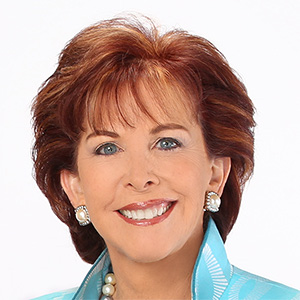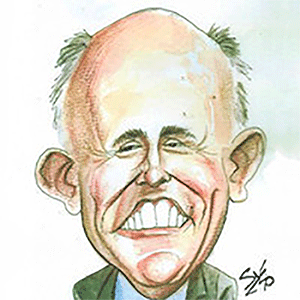Will Trump's tariffs crash TV's spring ad-selling party?
Published in Business News
President Donald Trump's fluctuating tariff proposals and an overall feeling of economic uncertainty could cast a long shadow over the annual presentations from TV networks and streamers looking to attract billions for commercial time over the next year.
The media industry will soon see advertisers and agency executives gather at New York venues for slick presentations and a stream of cocktail parties to get a look at upcoming programs from TV networks and streamers such as Amazon Prime Video and Netflix. The events — which begin next week and are known as the upfronts — will guide companies as to where to commit their ad dollars in the fourth quarter of 2025 and beyond.
But it's tricky for advertisers to make commitments amid the Trump administration's erratic rollout of tariff policies against China and other nations, which has created a state of uncertainty at a time when businesses have to plan ahead to place their ad dollars.
"It's really bananas going back and forth like this," said David Campanelli, president of global investment for the ad-buying firm Horizon Media. "What we're hearing from advertisers is that they are still waiting to understand the impact that tariffs will have on their business and how it will impact people's willingness to pay more."
Campanelli said he has yet to see any tariff-related budget cuts from his clients, who are hard at work planning best- and worst-case scenarios.
Brian Wieser, a principal at the consulting firm Madison and Wall, said Trump's actions on tariffs led him to lower his ad-spending forecast for 2025. He sees ad spending growing by 3.6% in 2025, down from the 4.5% increase he projected in December.
The biggest fear looming is a possible recession, which could have a devastating impact on the media business that is already in a volatile state due to shifting consumer habits. When companies are looking to trim costs during difficult economic times, marketing and advertising is often near the top of the list.
In a dire report last week, media analyst firm Moffett Nathanson wrote, "in a world where a recession hits the U.S., advertising will be hit harder — even in a relatively mild and quick recession scenario."
Moffett Nathanson said an economic downturn could reduce ad spending in 2025 by $45 billion, with online advertising losing $29 billion and TV down $12 billion.
In 2024, Moffett Nathanson pegged the total U.S. ad spending at $316.2 billion, up 14.5%, the largest percentage increase in more than 40 years. Streaming video was up 42% to $13.8 billion, while traditional TV was up 4.3% to $45 billion. Online advertising grew 16.3% to $204 billion.
During the last recession, ad spending fell 20% between 2007 and 2009.
A decline would be more punishing for traditional TV, which has seen its share of upfront advertising dollars dwindle annually since the pandemic in 2020, when viewing to streaming platforms accelerated. Those platforms now make up the largest share of TV viewing, according to Nielsen, surpassing broadcast and cable.
TV networks sell the vast majority of their commercial inventory ahead of the fall season when they launch new shows and have a slate of high-rated NFL games. Advertisers commit to buying time up front in order to lock in ratings and price guarantees. Buying closer to air time can be more expensive depending on demand.
But with uncertainty ahead, many advertisers may sit back and wait or increase their buys on digital platforms such as internet-connected TV, where they have more ability to move their dollars quickly based on economic conditions. Network TV upfront buys are firm commitments.
"People are looking for dynamic partners that are much more flexible," said Michael Shaughnessy, chief executive for Kargo, a New York-based agency that specializes in digital advertising. "Upfronts are essentially built on knowing the future of where your brand is going and what are the different shows and networks where you are showing up. And now advertisers are not as certain on what will happen to their products due to tariffs."
TV is used for broad ad campaigns that build brand awareness. Digital advertising is more often used to deliver quick, measurable results, which advertisers may favor in a more troubled economic climate, the ad executives noted.
Younger viewers have left traditional TV in droves, moving to social media and free ad-supported streaming channels. The skittishness over the economy may lead advertisers to shift more of their dollars to there as well.
Moffett Nathanson's note said shifting more ad dollars to digital platforms would be a punishing blow to TV, which has struggled as consumers have steadily moved to streaming platforms for video.
"Should budgets shift away from linear TV at an accelerated pace, we see risk of a more permanent reallocation toward connected TV and broader digital channels," the report said, noting that terrestrial radio and print media never recovered from the economic downturn in 2001.
©2025 Los Angeles Times. Visit at latimes.com. Distributed by Tribune Content Agency, LLC.











Comments